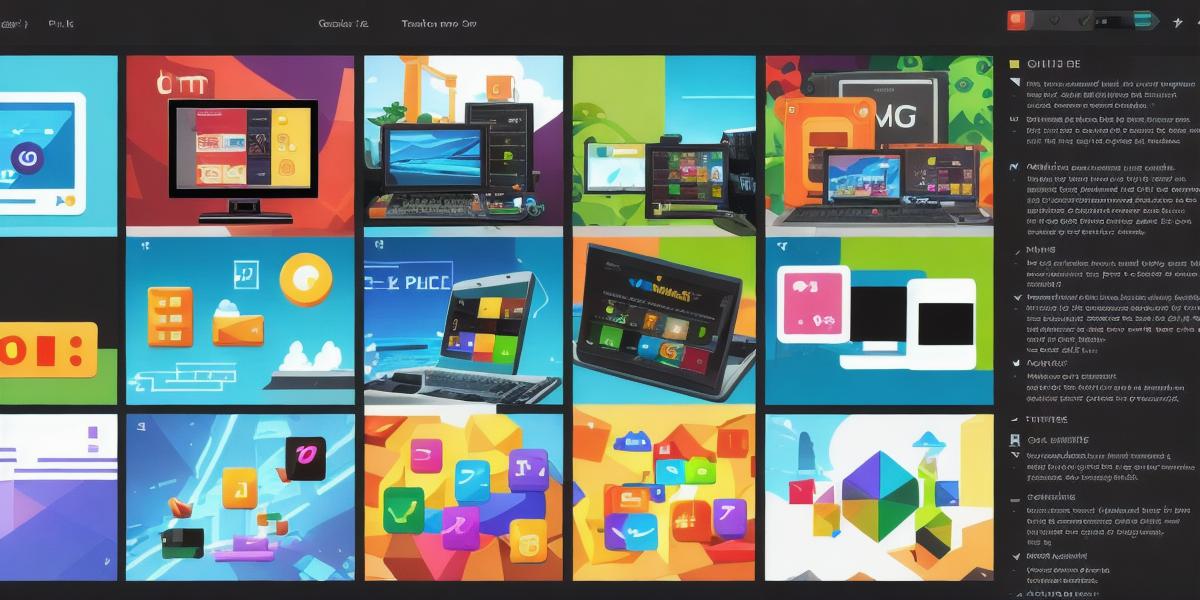Introduction:
HTML5 game development is an exciting new field that allows developers to create interactive, immersive games on the web without relying on proprietary software or plug-ins. With its support for advanced graphics, audio, and physics engines, HTML5 game development offers endless possibilities for creating engaging and innovative games. In this guide, we will explore the key components of HTML5 game development and provide practical advice for getting started.
Key Components of HTML5 Game Development:
- Canvas: The Canvas element is the backbone of HTML5 game development. It provides a 2D graphics surface that allows developers to draw shapes, lines, and images using JavaScript. With Canvas, developers can create complex animations, perform collision detection, and manipulate objects on the screen.
- Audio: HTML5 audio elements allow developers to embed sound files directly into their games. This includes background music, sound effects, and voiceovers. With this feature, developers can create an immersive audio experience that enhances the overall gameplay experience.
- Physics Engines: Physics engines are used to simulate physical interactions in games, such as gravity, collisions, and rigidbody dynamics. There are several popular physics engines available for HTML5 game development, including Box2D, Ammo.js, and Matter.js.
- Networking: Networking is essential for creating multiplayer games that can be played by multiple players over the internet. HTML5 provides built-in support for WebSockets, which allows for real-time communication between the client and server.
- Frameworks and Libraries: There are several frameworks and libraries available for HTML5 game development, including Phaser, PixiJS, and Babylon.js. These tools provide pre-built components, such as sprites, particles, and animations, that can be used to create games quickly and easily.
Getting Started with HTML5 Game Development:
- Learn the Basics: Before diving into HTML5 game development, it’s essential to have a solid understanding of JavaScript and web development concepts. There are several online courses and tutorials available that cover these topics in-depth.
- Choose a Framework or Library: Selecting a framework or library is an important decision when starting with HTML5 game development. Each tool has its strengths and weaknesses, so it’s crucial to choose one that aligns with your goals and experience level.
- Create a New Project: Once you have chosen a framework or library, create a new project using your preferred code editor. This will be the foundation of your game, and it’s important to get organized from the beginning.
- Add Canvas and Audio Elements: Start by adding the Canvas element and any necessary audio elements to your project. Use JavaScript to draw shapes, add sound effects, and manipulate objects on the screen.
- Implement Physics Engines: Next, integrate a physics engine into your game. This will allow you to simulate physical interactions, such as gravity and collisions.
- Build Multiplayer Capabilities: If you’re creating a multiplayer game, build in networking capabilities using WebSockets or another real-time communication protocol.
- Test and Refine: Finally, test your game thoroughly and refine it based on user feedback. This may involve tweaking the graphics, adjusting physics parameters, or adding new features.
Case Study:
A great example of an HTML5 game developed using a framework is "Pac-Man" by Google Chrome. In 2010, Google created a version of Pac-Man that could be played directly in a web browser, using the Chrome Web Store as a distribution platform. The game was a huge success and demonstrated the potential for HTML5 game development on a large scale.
FAQs:
- What is the difference between HTML5 and Flash?
HTML5 is a markup language used for creating web pages and applications, while Flash is a proprietary software platform used for developing multimedia content. HTML5 provides better performance, compatibility, and accessibility than Flash, making it the preferred choice for modern web development. - What are some popular HTML5 game development frameworks and libraries?
Some popular HTML5 game development frameworks and libraries include Phaser, PixiJS, Babylon.js, A-Frame, and Impact.js. Each tool has its own unique features and capabilities, so it’s important to choose one that aligns with your goals and experience level. - What are the requirements for HTML5 game development?
To get started with HTML5 game development, you will need a computer with a web browser, such as Chrome, Firefox, or Safari, and a text editor, such as Visual Studio Code or Sublime Text. You will also need some knowledge of JavaScript and web development concepts. - Can I create games for multiple platforms using HTML5?
Yes, HTML5 games can be created to run on multiple platforms, including desktop computers, tablets, and smartphones. With the right tools and techniques, developers can create responsive, cross-platform games that work seamlessly across different devices and browsers.

Summary:
HTML5 game development is a fascinating new field that offers endless possibilities for creating engaging and innovative games on the web. By understanding the key components of HTML5 game development and following these practical tips for getting started, developers can create powerful and immersive games that captivate audiences around the world. With the growing popularity of mobile gaming and the increasing demand for cross-platform experiences, HTML5 game development is poised to become one of the most exciting and dynamic fields in web development.
